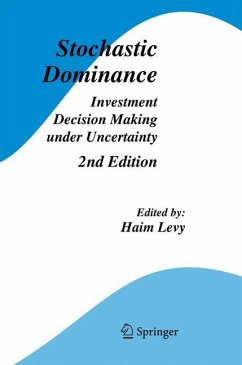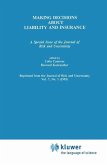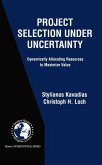This second edition of Stochastic Dominance is devoted to investment decision making under uncertainty. The book covers four basic approaches to this process: a) The stochastic dominance (SD) approach, developed on the foundation of von-Neumann and Morgenstem^ expected utiHty paradigm. b) The mean-variance approach developed by Markowitz^ on the foundation of von-Neumann and Morgenstern's expected utility or simply on the assumption of a utility function based on mean and variance. c) The "almost" stochastic dominance (ASD) rules and the "almost" me- variance rule (AMV). No matter whether one employs objective or subjective probabilities, the common stochastic dominance criteria and the mean variance rule may lead to paradoxes: they are unable to rank prospect A w^hich yields $1 with a probability of 0.01 and a million dollars with probability of 0.99, and prospect B which yields $2 with certainty. This is an absurdity as in any sample of subjects one takes, 100% of subjects choose A. The "almost" stochastic dominance criteria and "almost" mean variance rule, which have been recently been developed by Leshno and Levy in 2002^, suggest a remedy to such paradoxes.
From the reviews of the second edition: "This book is an economics book about stochastic dominance. ... is certainly a valuable reference for graduate students interested in decision making under uncertainty. It investigates and compares different approaches and presents many examples. Moreover, empirical studies and experimental results play an important role in this book, which makes it interesting to read." (Nicole Bäuerle, Mathematical Reviews, Issue 2007 d)








